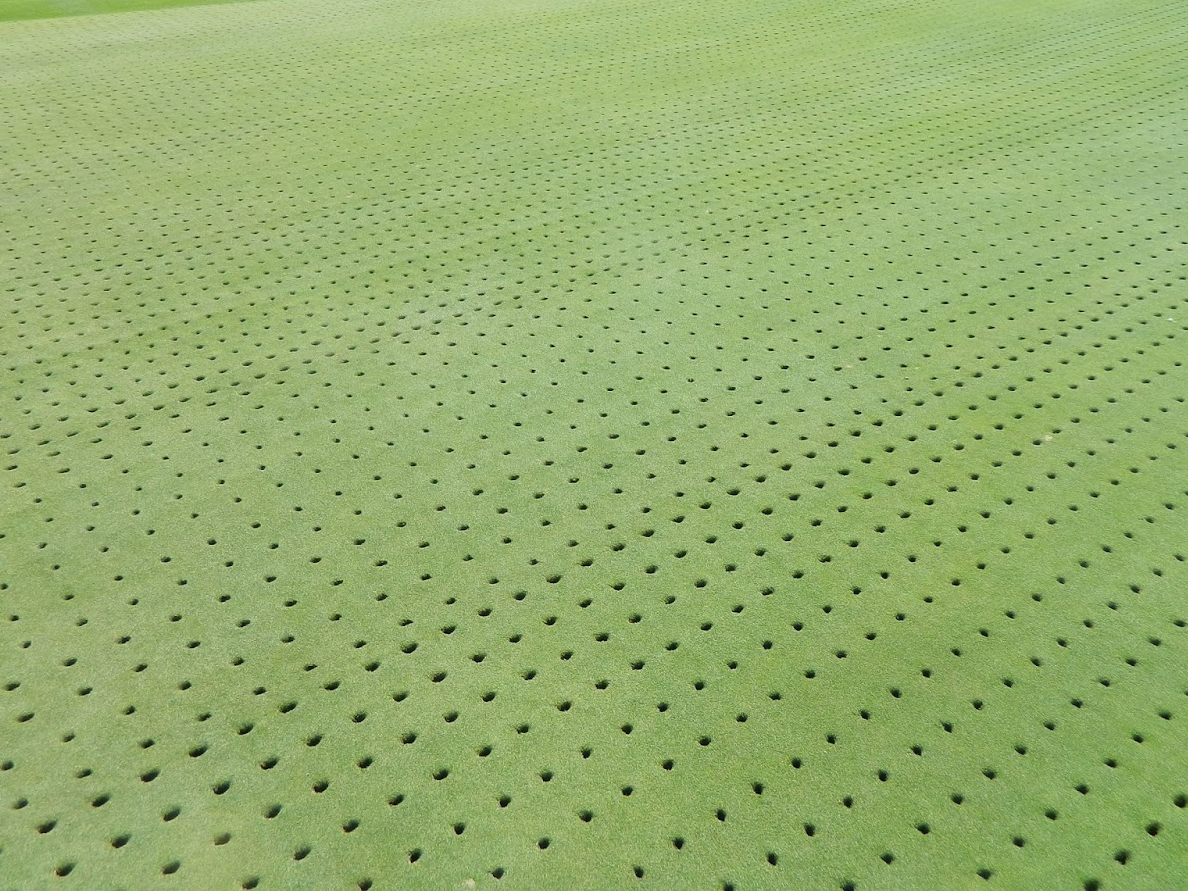
You see it often with Grand Strand golf courses, typically at the beginning and end of the summer season. You show up for your round, and find the greens (and maybe even the fairways) have been “punched” with small, sand-filled holes. Those slick greens you’ve just learned to navigate have now dramatically changed speed and texture.
Welcome to aerification season.
A temporary inconvenience? Sure. But it’s important to emphasize post-aerification conditions as “temporary.” And also the practice as “highly necessary,” in order to provide the overall great course conditions you’ve come to expect throughout the year in the Myrtle Beach area.
Aerification accomplishes three basic objectives:
1. It allows the playing surface’s key nutrients (water, oxygen, fertilizer) an easier short-term path into the soil to foster better long-term conditions. The small holes created in the process are then typically filled with top dressing, a mixture of sand and soil that allows water to seep into the roots.
2. It removes thatch, or organic matter that builds up between the soil and the greens’ surface. Too much thatch can essentially “choke off” the playing surface; removing excess thatch lets it breathe easier, as oxygen now has a more open pathway to the roots.
3. It alleviates compaction, a natural side effect of the many thousands of rounds played on Myrtle Beach-area golf courses and the heavy foot traffic they bring to the greens each busy season.
And when we say the post-aerification conditions are “temporary,” we’re typically talking 10 days or so before the playing surface fully recovers to its pre-maintenance levels. And playing conditions improve steadily within that time frame.
If you’re not sure how aerification will impact your summer golf plans, just call ahead to the course you want to play. They’ll tell you the dates involved so you can plan accordingly.
